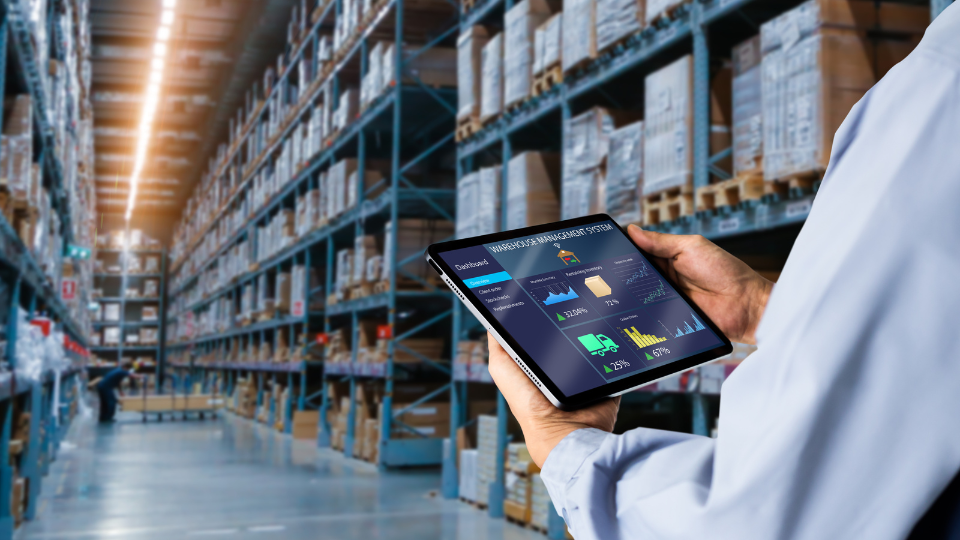PlantStar BLOG
What’s the Difference Between ERP, MRP, and MES?
Oct 27, 2025 3:12:28 PM / by David Crowley

Manufacturers are under constant pressure to allocate resources efficiently and streamline production processes to stay competitive. Software is essential for this purpose. Three of the most common software systems used in manufacturing are enterprise resource planning (ERP), materials resource planning (MRP), and manufacturing execution systems (MES). These platforms are often discussed together, but they each play a different role and facilitate a different aspect of manufacturing management. In this article, we’ll explore what ERP, MRP, and MES systems do, highlight the key differences between them, and discuss how they can work together to help optimize manufacturing operations from the supply chain to product delivery.
What are ERP, MRP, and MES, and how are they different?
All three of these systems use data collection and analysis to help manufacturers operate more efficiently. Each is a critical piece of a modern digital manufacturing ecosystem. However, their focus and functions differ in important ways.
MRP
MRP systems are focused on ensuring the right materials are available at the right time for production. They provide tools for procurement planning, inventory control, and production scheduling. By analyzing demand forecasts and current stock levels, an MRP system helps purchasing teams and production planners determine what materials are needed, when they are needed, and in what quantities. This makes MRP especially useful for avoiding shortages and preventing costly delays on the production line. An MRP concentrates specifically on materials planning and operates at a more tactical level than an ERP, which has a broader focus.
ERP
Enterprise resource planning systems are designed to integrate all the core functions of a business. In addition to manufacturing processes, ERP brings together finance, human resources, supply chain management, and customer relationship management into a single platform. This unified approach allows businesses to align strategic goals across departments, improve collaboration, and track performance across the company.
While ERP systems often include material resource planning functionality, they extend far beyond production planning. ERP provides a broader view of the business as a whole, ensuring that resource allocation and planning are connected with financial, customer, and organizational priorities.
MES
An MES is designed to manage, monitor, and optimize production on the shop floor. Unlike ERP and MRP systems, which focus primarily on planning, MES focuses on execution. It provides real-time visibility into production processes, collecting and analyzing data on machine performance, workforce activity, and product quality.
With an MES, manufacturers can monitor equipment status, manage workflows, and ensure product traceability. This granular, real-time insight empowers operators, supervisors, and quality teams to make quick adjustments that optimize production, reduce waste, and improve overall efficiency.
Building an End-to-End Solution
While each system provides value on its own, manufacturers achieve the best results when ERP, MRP, and MES work together as part of an integrated ecosystem. Integration is where the real competitive advantage lies. An MES serves as the bridge between planning systems like ERP and MRP and the real-time realities of the shop floor. When connected properly, an MES enables just-in-time production, helping manufacturers respond quickly to demand shifts or seasonal spikes without carrying excess inventory.
Even more importantly, MES creates a closed feedback loop. Data collected on the shop floor doesn’t just stay within production; it flows back to ERP and MRP systems, where it can be used to improve forecasting, refine procurement schedules, and strengthen planning accuracy. This continuous exchange reduces the gap between plans and reality by grounding high level decisions in real-world shop floor performance.
By unifying planning with execution, integration turns these disparate systems from siloed tools into a cohesive manufacturing intelligence platform. This end-to-end visibility allows manufacturers to coordinate resources across the supply chain, identify inefficiencies, and make smarter, faster decisions that improve profitability and performance.
Making the Best Choice for Your Operation
ERP, MRP, and MES are complementary—not competing—systems. ERP and MRP are focused on planning and ensuring resources are available, while MES ensures production is executed as efficiently as possible without sacrificing quality. By using them together, manufacturers connect strategy with execution, gaining the insight and control needed to optimize every stage of production.
The key question is not whether your business should choose ERP, MRP, or MES, but rather how well your systems are able to communicate with each other. If your planning tools are disconnected from what’s happening on the shop floor, you may be missing opportunities to reduce waste, cut costs, and improve efficiency.
For more than 40 years, PlantStar has been helping manufacturers optimize overall equipment effectiveness through monitoring and data analysis. PlantStar's MES solutions are designed to integrate seamlessly with ERP and MRP systems, delivering real-time visibility that empowers smarter decision-making across the entire operation.
Learn more about how PlantStar's software solutions and support services can sharpen your competitive edge.
Subscribe to Email Updates
Posts by Topic
- Manufacturing Execution Systems (38)
- manufacturing solutions (16)
- MES 101 (13)
- Industry 4.0 (11)
- improve efficiency (10)
- Plastic Molding (9)
- Plastics Technology (9)
- mes software (9)
- mes solutions (9)
- MES hardware (8)
- Shop Floor Production (8)
- digital transformation (7)
- Reduce scrap (6)
- data-driven-decisions (6)
- Medical molding (5)
- lean manufacturing (5)
- process monitoring (5)
- product quality (5)
- lights-out manufacturing (4)
- manufacturing dashboard (4)
- production monitoring (4)
- ERP integration (3)
- Shop Floor Safety (3)
- supply chain management (3)
- Injection Molding Technology (2)
- defect collection (2)
- machine mes (2)
- process variables (2)
- digital strategy (1)
- labor gap (1)
- throughput (1)
